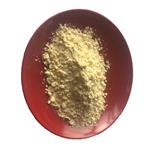Chemical Properties
white powder
Uses
Molecular sieves, 3A is used as desiccant in petroleum and chemical industries. It is useful for the drying of unsaturated hydrocarbons such as ethylene, propylene and butadiene. It is also used in the removal of water from ethanol. It finds application in the drying of certain chemicals namely ethanol, refrigerants and natural gas. It plays an important role as selective adsorption of water in insulated glass (IG) and polyurethane. It has been considered as a general-purpose drying agent in polar and non polar media.
Uses
Molecular sieve 3A may be used in the following processes:
- As a general-purpose drying agent in polar and nonpolar media.
- Commercial dehydration of unsaturated hydrocarbon streams, including cracked gas, propylene, butadiene, acetylene
- Drying polar liquids such as methanol and ethanol.
- Adsorption of molecules such as NH3 and H2O from a N2/H2 flow.
Application
Molecular sieve 3A is mainly used for drying of unsaturated hydrocarbons such as petroleum cracked gas, ethylene, butadiene; drying of polar liquids such as methanol and ethanol, drying of refrigerants; deep drying of kerosene and aero-engines; drying of nitrogen-hydrogen mixed gas . Desiccant for petrochemical, vacuum glass and other industries.
Definition
Porous crystallinesubstances, especially aluminosilicates(see zeolite), that can be dehydratedwith little change in crystalstructure. As they form regularlyspaced cavities, they provide a highsurface area for the adsorption ofsmaller molecules.
The general formula of these substancesis M
nO.Al
2O
3.xSiO
2.yH
2O,where M is a metal ion and n is twicethe reciprocal of its valency. Molecularsieves are used as drying agentsand in the separation and purificationof fluids. They can also be loadedwith chemical substances, which remainseparated from any reactionthat is taking place around them,until they are released by heating orby displacement with a morestrongly adsorbed substance. Theycan thus be used as cation exchangemediums and as catalysts and catalystsupports. They are also used asthe stationary phase in certain typesof chromatography (molecular-sievechromatography).
General Description
Molecular sieves are crystalline metal aluminosilicates having a 3-dimensional interconnecting network of silica and alumina tetrahedra. Natural water of hydration is removed from this network by heating to produce uniform cavities which selectively adsorb molecules of a specific size. The 3A form is made by substituting potassium cations for the inherent sodium ions of the 4A structure, reducing the effective pore size to ~3?, excluding diameter >3?, e.g., ethane. The 4 to 8-mesh type is normally used in gas-phase applications. Molecular sieves are considered a universal drying agent in polar and nonpolar media.
Structure and conformation
The general formula of the chemical composition of molecular sieve is: (Mn+)2/nO·Al2O3·xSiO2·pH2O, M represents metal ion (usually Na in artificial synthesis), n represents the valence of metal ion, and x represents the number of moles of SiO2, also known as is the ratio of silicon to aluminum, and p represents the number of moles of water. The most basic structure of the molecular sieve framework is SiO4 and AlO4 tetrahedron, which form a crystal of a three-dimensional network structure through the combination of shared oxygen atoms. This combination forms the holes and channels with molecular level and uniform pore size. Due to different structures and forms, the "cage"-shaped spatial pores are divided into "cage" structures such as α, β, γ, hexagonal columns, and faujasite.



